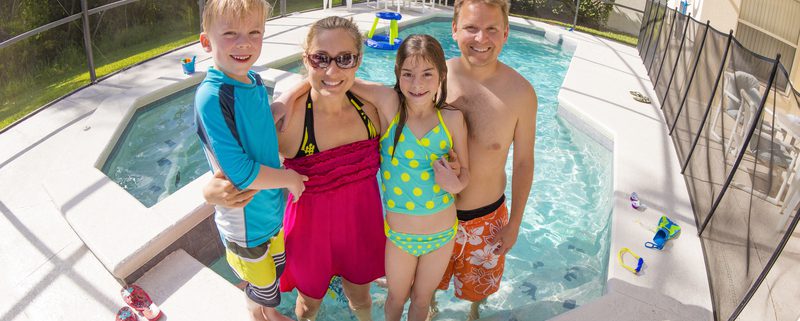Pool Safety 101: Essential Tips and Practices for Your Family
The serene blue waters of a swimming pool beckon families for fun, exercise, and relaxation. However, pools also represent a significant safety hazard, especially to young children. With the right measures and practices in place, families can enjoy the numerous benefits of a pool, mitigating the risks that come with it. A diligent approach to pool safety can ensure that leisure time does not turn into a tragic event.
The Imperative of Proper Barriers
A fundamental step in securing a pool is the installation of appropriate barriers. Fences should surround the pool, with a minimum height recommendation usually set at four feet. These fences need to have self-closing and self-latching gates that are out of the reach of children, minimizing the risk of an unsupervised child gaining access to the pool area. Furthermore, barriers should not be easily climbable, and there should be no furniture nearby that could help a child over the fence.
Another layer of protection can be a pool cover. Safety covers are designed to withstand weight and prevent accidental submersion. When the pool is not in use, a securely fastened cover can act as an additional deterrent to curious kids.
The Role of Pool Alarms
Alarms add an extra level of security for pool areas. Various types of alarms exist, including surface wave detection alarms that alert when water is disturbed, and subsurface disturbance detectors that signal when an object enters the water. Door alarms can also be installed on any doors leading to the pool area, sounding off when the door is unexpectedly opened. These devices provide an early warning system, which can be invaluable in preventing accidents.
Anti-Entrapment Devices for Pool Drains
The power of pool drains can pose a hidden danger, particularly to small children. Anti-entrapment devices are engineered to mitigate these risks. Safety drain covers and Safety Vacuum Release Systems (SVRS) that automatically cut off the pump if a blockage is detected can prevent entrapment and the horrific accidents that can result from it. Understanding and installing these devices can protect against one of the more insidious pool hazards.
Establishing Clear Family Pool Rules
Safety is also about behavior and adherence to rules designed to protect. Families should establish clear and non-negotiable pool rules. For instance, no child should ever swim alone. The “buddy system” should be a non-negotiable rule for all family members, regardless of age or swimming ability. Rules against running around the pool and not engaging in rough play can also prevent unnecessary slips and falls.
Setting limits on where individuals can swim based on their swimming proficiency is another critical rule. Areas that are deeper and potentially more hazardous should be off-limits to those who have not yet demonstrated they can swim well in them. It is also wise to enforce periods of rest during swimming, especially with younger children, to avoid exhaustion that can increase the risk of accidents.
The Importance of Swimming Lessons
Swimming lessons can be a vital part of pool safety. Formal swimming instruction significantly reduces the risk of drowning among children aged 1 to 4 years. Qualified instructors can teach not only the mechanics of swimming but also essential water safety practices. Even if swimming lessons have been undertaken, they should not be considered an alternative to vigilant supervision. A false sense of security can be just as dangerous as a lack of barriers or safety practices.
First Aid Tips for Common Pool-Related Accidents
Despite all precautions taken, accidents can occur, and knowing how to respond is critical. For minor injuries such as scrapes or bruises, a first aid kit should be readily accessible. It should be well stocked with bandages, antiseptic wipes, and anti-inflammatory medications.
In the event of more serious incidents such as a suspected neck injury or unconsciousness, it is paramount not to move the injured person unless absolutely necessary due to an unsafe environment. Call emergency services immediately and preserve the victim’s body in a stable position.
For drowning or near-drowning events, immediate action is required. After ensuring the scene is safe, rescuers should perform rescue breathing and CPR if the victim is not breathing. These life-saving techniques can make the difference between life and death, so it is beneficial for all pool owners and frequent pool users to be trained in CPR and basic first aid.
Regular refreshers on first aid procedures can also maintain readiness in case of an emergency. These trainings often include learning how to use an Automated External Defibrillator (AED), which can be critical in the case of cardiac arrhythmias following an accident.
A pool at home brings family and friends together for many joyful occasions. However, it is the responsibility of the pool owner to make sure that the joys of swimming are not overshadowed by preventable accidents. Proper barriers, alarms, anti-entrapment devices, clear rules, swimming lessons, and first aid knowledge are essential components of a comprehensive pool safety strategy. Diligence in these areas can not only prevent accidents but also provide peace of mind, allowing for the full enjoyment of a home pool. By prioritizing safety, families can ensure that poolside memories are happy and secure.
At SafeWaters, we understand the importance of your family’s pool safety. That’s why we offer a range of services, including the installation of pool barriers, alarms, and anti-entrapment devices. Ensure your pool area is safe and enjoyable for everyone by consulting with our experts today.



